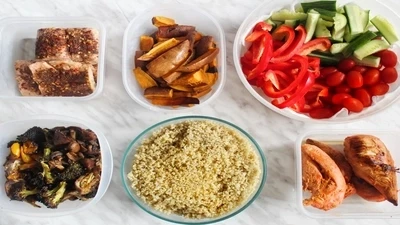
Planning family dinners can be both a rewarding and challenging task. Juggling work, school, and extracurricular activities while ensuring that your family eats healthy can feel overwhelming. The importance of maintaining a nutritious diet cannot be overstated; it's essential for promoting health, growth, and overall well-being.
To plan healthy family dinners, it's important to understand the nutritional needs of your family members. A balanced diet typically includes:
Proteins: Vital for growth, maintenance, and repair of tissues. Sources include lean meats, poultry, fish, eggs, legumes, and dairy products.
Carbohydrates: The primary source of energy for the body. Focus on whole grains, fruits, and vegetables.
Fats: Essential for hormone production and nutrient absorption. Include sources of healthy fats, such as avocados, nuts, seeds, and olive oil.
Vitamins and Minerals: Fruits and vegetables provide essential vitamins and minerals that support overall health. Aim for a colorful variety.
Hydration: Don’t forget the importance of water. Aim to provide plenty of fluids, mainly water, throughout dinners.

To simplify the planning process, it can be helpful to create a flexible weekly dinner plan. This plan should include a variety of proteins, carbohydrates, and plenty of vegetables to ensure balanced meals. Here’s an outline for how to structure your week:
Dish: Grilled Chicken with Quinoa and Steamed Broccoli
Ingredients:
Instructions:
Nutritional Breakdown:
Dish: Turkey Tacos with Fresh Salsa and Avocado
Ingredients:
Instructions:
Nutritional Breakdown:
Dish: Lentil Soup with Whole Grain Bread
Ingredients:
Instructions:
Nutritional Breakdown:
Dish: Baked Salmon with Sweet Potatoes and Green Beans
Ingredients:
Instructions:
Nutritional Breakdown:
Dish: Vegetable Stir-Fry with Tofu and Brown Rice
Ingredients:
Instructions:
Nutritional Breakdown:
Dish: Whole Wheat Pasta with Marinara Sauce and Turkey Meatballs
Ingredients:
Instructions:
Nutritional Breakdown:
Dish: Quinoa and Black Bean Salad
Ingredients:
Instructions:
Nutritional Breakdown:
Make a Grocery List: Based on your weekly plan, create a list of necessary ingredients to streamline shopping.
Prep in Advance: Prepare and pre-chop vegetables, marinate proteins, or batch-cook grains at the start of the week for quicker meal assembly.
Involve the Family: Get the entire family involved in meal planning and preparation. It's a fantastic way to teach children about cooking and nutrition.
Rotate Recipes: Keep things fresh by rotating recipes or adding new ones every few weeks. This helps prevent boredom and encourages trying new foods.
Be Flexible: Life can be unpredictable. If a planned meal doesn’t work one night, don’t hesitate to switch around meals. Keeping extra ingredients on hand for quick meals is a smart strategy.
Make Use of Leftovers: Use leftovers creatively. For instance, roasted chicken can become chicken salad or be added to a soup later in the week.
Portion Control: Serving appropriate portion sizes can help prevent overeating while ensuring everyone gets the nutrients they need.
Invest in Quality Kitchenware: Having the right tools, like quality knives and pots, can make cooking more enjoyable and efficient.

It’s not uncommon for children to be picky eaters, and introducing new foods can be challenging. Here are some ideas to keep kids engaged in healthy eating:
Make It Fun: Present meals in fun shapes or colors. For example, a smiley face made of fruits and vegetables can make the plate more inviting.
Let Them Choose: Allow children to choose vegetables or fruits for a particular meal. Giving them a sense of control can encourage them to try new foods.
Culinary Lessons: Teach basic cooking skills. Kids often enjoy their meals more when they’ve had a hand in preparing them.
Theme Nights: Create theme nights (like Taco Tuesday or Stir-Fry Friday) to get kids excited about dinner.
Planning a week of healthy family dinners doesn’t have to be daunting. By focusing on a balanced approach that includes lean proteins, whole grains, and plenty of colorful fruits and vegetables, you can ensure that your family is getting the nutrients they need.
Creating a meal plan fosters healthier eating habits, reduces stress during busy weeknights, and encourages family bonding time around the dinner table. By using the tips and resources provided in this post, you can make dinner a positive and nutritious experience for your family.